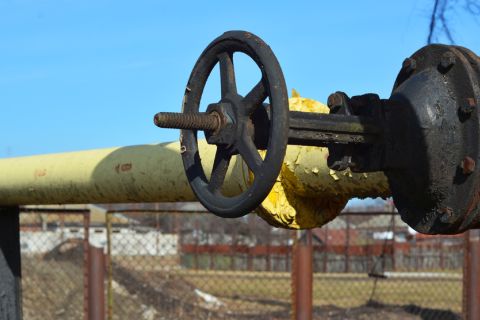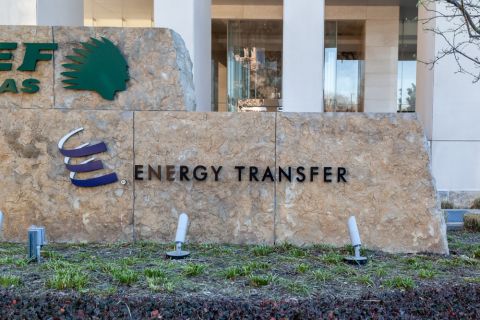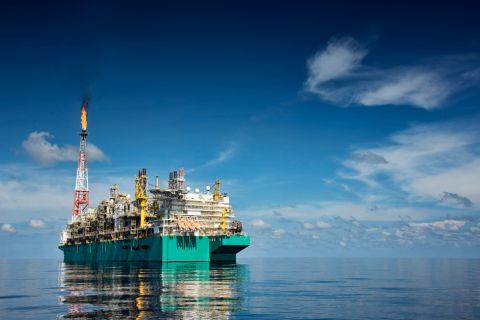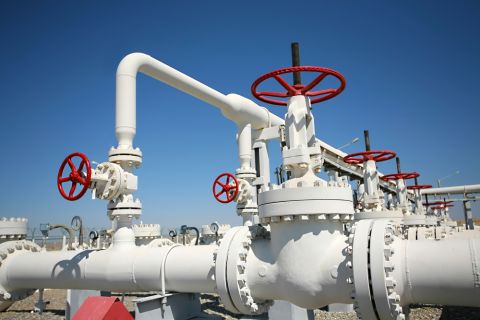Aker BP has completed exploration well 25/2-18 S and appraisal wells 25/2-18 A, 25/2-18 B and 25/2-18 C in production license 442 (PL 442) offshore Norway—with hydrocarbons discovered.
The operator is clearly confident about the find as it already is considering development options for the reserves.
The wells were drilled 4 km (2.5 miles) south of the 25/2-10 S (Frigg Gamma Delta) oil and gas discovery and 8 km (5 miles) north of the shutdown Frøy Field in the Norwegian North Sea.
“The objective of well 25/2-18 S was to prove petroleum in Middle Jurassic reservoir rocks belonging to the Vestland Group (the Hugin and Sleipner formation). The other three wells were drilled to delineate the discovery,” said the Norwegian Petroleum Directorate (NPD).
Well 25/2-18 S encountered two oil columns in the Hugin Formation, 30 m (98 ft) and 86 m (282 ft) in total, both of which had about 20 m (66 ft) of sandstones with moderate to good reservoir quality.
Appraisal well 25/2-18 A, which was drilled 1 km (.6 mile) toward the southeast in relation to 25/2-18 S, also encountered two oil columns in the Hugin Formation, 34 m (112 ft) and 27 m (89 ft) in total, both with about 25 m (82 ft) of sandstones with moderate to good reservoir quality.
Appraisal well 25/2-18 B, which was drilled 1.4 km (.9 mile) north of 25/2-18 S to test the northern segment, encountered the Hugin Formation with aquiferous sandstones of about 15 m (49 ft) and 75 m (246 ft), both with moderate reservoir quality. The well is classified as dry.
Appraisal well 25/2-18 C, which was drilled 1 km (.6 mile) west of 25/2-18 S, encountered three oil columns in the Hugin Formation totaling 27 m (89 ft), 23 m (75 ft) and 55 m (180 ft), of which 15 m (49 ft), 11 m (36 ft) and 10 m (33 ft) of sandstones of moderate to good reservoir quality.
A 7 m (23 ft) condensate column was also encountered, of which 3 m (10 ft) in sandstones of moderate reservoir quality, noted the NPD.
Preliminary estimates place the size of the discovery between 4 MMcm and 12 MMcm (141.2 MMcf and 423.6 MMcf) of recoverable oil equivalents. This is equivalent to 25.16 MMbbl and 75.48 MMbbl of oil.
Development Potential
“The licensees are assessing the discovery along with other nearby discoveries with a view toward potential development,” the NPD said.
Extensive data acquisition and sampling have been carried out. Two successful formation tests (DST) were conducted in 25/2-18 A. The maximum production rate was 600 cm (21.18 Mcf) of oil per flow day through a 40/64-in. nozzle opening in the lowermost oil zone. The gas-oil ratio (GOR) is 140 cm/cm.
The production rate in the uppermost oil zone was 210 cm (7.41 Mcf) of oil per flow day through a 24/64-in. nozzle opening. The GOR was 164 cm/cm. The formation tests showed moderate flow properties.
The wells are the second, third, fourth and fifth exploration wells in PL 442. The license was awarded in APA 2006.
Wells 25/2-18 S, 25/2-18 A, 25/2-18 B and 25/2-18 C were drilled to respective measured depths of 3,870 m (12,697 ft), 4,066 m (13,341 ft), 4,335 m (14,223 ft) and 4,369 m (14,335 ft) below the sea surface, and vertical depths of 3,813 m (12,510 ft), 3,723 m (12,215 ft), 3,803 m (12,478 ft) and 4,029 m (13,219 ft) below the sea surface. All of the wells were terminated in the Dunlin Group in the Lower Jurassic. Water depth at the site is 121 m (397 ft). The wells will be permanently plugged and abandoned.
Wells 25/2-18 S, 25/2-18 A, 25/2-18 B and 25/2-18 C were drilled by the Maersk Interceptor rig, which will now proceed to PL 001B (Ivar Aasen), where the plan is for the rig to drill three water injector wells and one oil producer, the NPD added.
—Steve Hamlen
Recommended Reading
Venture Global Acquires Nine LNG-powered Vessels
2024-03-18 - Venture Global plans to deliver the vessels, which are currently under construction in South Korea, starting later this year.
Summit Midstream Sells Utica Interests to MPLX for $625MM
2024-03-22 - Summit Midstream is selling Utica assets to MPLX, which include a natural gas and condensate pipeline network and storage.
Energy Transfer Asks FERC to Weigh in on Williams Gas Project
2024-04-08 - Energy Transfer's filing continues the dispute over Williams’ development of the Louisiana Energy Gateway.
Canada’s First FLNG Project Gets Underway
2024-04-12 - Black & Veatch and Samsung Heavy Industries have been given notice to proceed with a floating LNG facility near Kitimat, British Columbia, Canada.
Ozark Gas Transmission’s Pipeline Supply Access Project in Service
2024-04-18 - Black Bear Transmission’s subsidiary Ozark Gas Transmission placed its supply access project in service on April 8, providing increased gas supply reliability for Ozark shippers.





